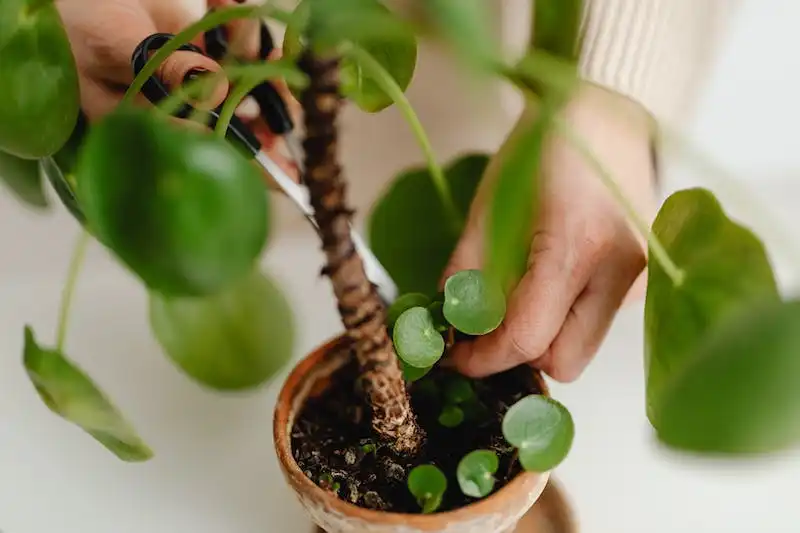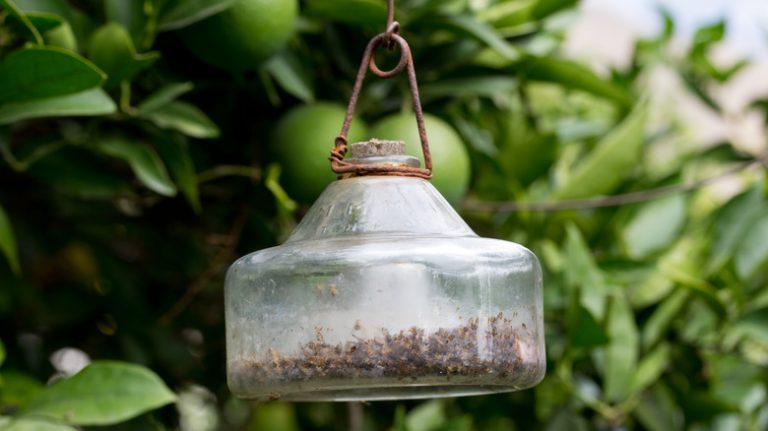Chinese juniper (Juniperus chinensis) is a versatile and attractive evergreen tree or shrub that is native to Asia. Its blue-green foliage and bushy habit make it a popular choice for landscaping in urban areas. Chinese juniper has a rich history and has been cultivated for centuries. If you want to learn how to grow this beautiful plant, read on to find out what care it requires and how to propagate it.
Chinese juniper comes in various sizes and shapes, ranging from small and compact to large and sprawling. The tree has a conical shape when young, with dense branches and soft, bluish-green foliage. As it matures, the tree takes on an irregular, irregularly branched habit, with exfoliating bark that reveals a reddish-brown color.
Chinese juniper is a low-maintenance plant that can tolerate a wide range of growing conditions. It prefers well-drained soil that is slightly acidic, but it can also adapt to slightly alkaline or clay soils. This plant is drought-tolerant once established, but it will benefit from regular watering, especially during hot and dry spells. Chinese juniper can also tolerate salt-spray, making it suitable for coastal gardens.
Propagation of Chinese juniper can be done through seeds or cuttings. To grow the plant from seeds, collect the blue-black berry-like cones in the fall. Extract the seeds and sow them in containers filled with well-drained soil. Keep the containers in a sunny location and water them regularly. The seeds will germinate in about 2 to 3 weeks. Cuttings can be taken in the spring or fall and rooted in a mixture of perlite and peat moss. Place the cuttings in a location with bright, indirect light and keep the soil moist until roots develop.
Chinese juniper has several uses in landscaping. Its compact habit and ability to tolerate urban conditions make it an excellent choice for hedges, screens, and windbreaks. It can also be grown in containers and used as a trailing plant. Chinese juniper can be shaped through pruning and shearing, allowing you to create various forms and sizes according to your preference. Additionally, some cultivars of Chinese juniper, such as ‘Hetzii’, ‘Shimpaku’, and ‘Ames’, are less susceptible to pests and diseases, making them suitable for low-maintenance landscapes.
In conclusion, Chinese juniper is a beautiful and versatile plant that can add a touch of elegance to your garden. With its attractive foliage and compact habit, it is a popular choice among gardeners. By providing it with well-drained soil, regular watering, and occasional fertilizer, you can ensure that your Chinese juniper thrives and remains healthy. So go ahead and plant this lovely tree, and enjoy its beauty for years to come!
How to Plant and Grow Chinese Junipers
If you want to add a beautiful and hardy plant to your landscape, consider growing Chinese Junipers. These plants, also known as Juniperus chinensis, are beloved for their silver-blue foliage and lovely pointy stems that can add a pop of color to any garden or yard.
When it comes to cultivation, Chinese Junipers are relatively easy to manage. They are tolerant of a wide range of growing conditions and can thrive in full sun or partial shade. Chinese Junipers are also resistant to many common diseases and pests, making them a low-maintenance plant option.
- Choosing the Right Spot: Chinese Junipers prefer well-drained soil, so make sure to plant them in an appropriate location. They can tolerate various types of soil, including sandy or rocky soil. However, avoid planting them in areas that are prone to flooding or have poor drainage.
- Planting Chinese Junipers: Begin by digging a hole that is slightly wider and as deep as the root ball of the plant. Place the Chinese Juniper in the hole, making sure that the top of the root ball is level with the surrounding ground. Backfill the hole with soil and water the plant thoroughly.
- Watering and Maintenance: While Chinese Junipers are drought-tolerant once established, they still need regular watering during the first year of growth. Water deeply and thoroughly to ensure that the roots receive enough moisture. As for maintenance, Chinese Junipers rarely require pruning unless you want to control their size or shape. If pruning is needed, do it during the winter when the plant is dormant.
- Transplanting Chinese Junipers: Chinese Junipers have a fibrous root system, which makes them relatively easy to transplant. If you need to move a Chinese Juniper, do it during the dormant season, preferably in early spring or late fall. Dig a hole in the new location that is twice the width of the root ball, gently remove the plant from its current spot, and place it in the new hole. Backfill with soil and water thoroughly.
Chinese Junipers come in various cultivars, each with its own unique growth habit and appearance. Some popular varieties include Hetzii, Pfitzer, Sargentii, and Blue Point. These Chinese Juniper cultivars can range from compact and mat-like groundcovers to broad, upright plants. Depending on the cultivar, they can grow relatively quickly, adding a natural and colorful touch to any landscape.
Overall, growing Chinese Junipers is a rewarding experience for any gardener. Not only do they provide a beautiful aesthetic appeal to your outdoor space, but they also require minimal care and maintenance. Whether you’re looking for a wind-resistant plant for an urban garden or something to fill in empty spaces in your landscape, Chinese Junipers are a great choice.
What You’ll Learn
In this guide, you will learn about the various colors, berry-like fruits, sizes, and growing habits of Chinese Juniper, a beloved juniper species from Asia. You will get to know how to care for and propagate this horticultural wonder. From its bluish-green foliage to its resistant nature, you will discover all the essential information for successfully growing Chinese Juniper. You will also learn about the different varieties, such as Kaizuka and Parsonii, and their specific characteristics. The guide will provide you with step-by-step instructions on planting, transplanting, and trimming the juniper. You will learn about the ideal moisture and soil conditions needed for healthy growth and how to deal with common issues like cedar-apple rust. Throughout the guide, you will find useful references to the University of Iowa’s comprehensive guide on Chinese Juniper, where you can find additional information. By the end of this guide, you will be equipped with the knowledge to successfully grow and care for Chinese Juniper, no matter where you are located. Whether you are looking to create a groundcover or a striking focal point in your garden, Chinese Juniper is a versatile plant that adapts well to various conditions. So, let’s get started and learn everything you need to know about growing Chinese Juniper!
What Is Chinese Juniper
Chinese Juniper (Juniperus chinensis) is a widely grown shrub in the horticultural world. It is a member of the cypress family and is known for its attractive and varied foliage colors, ranging from blue-green to silver-green. Chinese Juniper shrubs have a broad, irregular growth habit and can quickly reach a height of up to 20 feet or more, depending on the variety.
Chinese Juniper shrubs have needle-like leaves that are pointed at the tips and come in pairs opposite each other on the branches. The berries of the Chinese Juniper are small, berry-like structures that can vary in color from blue to black, depending on the cultivar. These berries are not typically edible and are mainly used for ornamental purposes.
Chinese Juniper is a hardy plant that can tolerate a wide range of growing conditions. It prefers full sun but can also grow in partial shade. It is resistant to many diseases and pests but can be susceptible to certain fungus diseases, such as cedar-apple rust.
Chinese Juniper is a low-maintenance plant that does not require much care. It has a moderate water requirement and should be watered moderately, especially during dry periods. It is important not to overwater the plant, as it can lead to root rot. Chinese Juniper shrubs also do well in containers and can be grown indoors if needed.
Chinese Juniper is often used as a screen or hedge due to its dense foliage and fast growth. It can also be grown as a specimen plant or used in rock gardens. It is a popular choice for landscapers and homeowners alike due to its attractive appearance and versatility. Some popular Chinese Juniper varieties include ‘Hetzii’, ‘Pfitzer’, and ‘Ames’.
In summary, Chinese Juniper is a beloved shrub that is known for its attractive foliage and versatile growing habits. It is a low-maintenance plant that is relatively resistant to diseases and pests. Whether you’re looking for a plant to use as a screen, hedge, or specimen plant, Chinese Juniper is a good choice.
Cultivation and History
Chinese Juniper (Juniperus chinensis) is a popular evergreen coniferous shrub in horticulture. Native to Asia, this plant has a fascinating history and is widely cultivated for its unique beauty and adaptability.
The Chinese Juniper is known for its conical or columnar growth habit. It can grow up to 20-30 feet tall, with a spread of 10-20 feet. The foliage is a beautiful bluish-green color, resembling the spruce tree. The soft and juvenile foliage transitions to a woody texture as the plant matures.
In terms of cultivation, the Chinese Juniper is fairly low-maintenance and can tolerate a wide range of growing conditions. It prefers full sun but can also grow in partial shade. The soil should be well-drained and neutral to slightly acidic, although it can tolerate slightly alkaline soils as well.
One interesting feature of the Chinese Juniper is its ability to tolerate salt. This makes it an excellent choice for coastal areas or gardens with saline soils. However, it is important to select salt-tolerant cultivars, such as ‘Spartan’ or ‘Mountbatten’, to ensure the best performance in these conditions.
Chinese Juniper has a long history in ornamental horticulture. It has been cultivated for centuries in China and Japan for its aesthetic value. The plant holds cultural significance in these regions and is often used in traditional gardens and bonsai cultivation.
When it comes to pruning, the Chinese Juniper requires minimal attention. It naturally grows in a bushy, dense form, but some light pruning may be necessary to maintain its shape and structure. Remove any dead or diseased branches, and trim back any excessively long or straggly growth. Pruning is best done in early spring, before new growth starts.
Chinese Juniper is dioecious, meaning it has separate male and female plants. The female plants produce small berry-like cones, while the male plants release pollen. If you want to enjoy the berry-like cones, you will need to select a female cultivar.
Overall, Chinese Juniper is a versatile and beautiful plant that can be used in various garden settings. It can be planted as a specimen tree, a foundation planting, or as a groundcover. Its classic beauty and adaptability make it a beloved choice for many gardeners.
If you are interested in growing Chinese Juniper, here are some tips to help you get started:
- Choose a suitable location with full sun or partial shade.
- Ensure the soil is well-drained and neutral to slightly acidic.
- Water the plant regularly during its first year to establish a strong root system.
- Once established, Chinese Juniper is drought-tolerant and only needs watering during extended dry periods.
- Apply a slow-release fertilizer in early spring to promote healthy growth.
- Mulch around the base of the plant to conserve moisture and suppress weed growth.
- Monitor the plant for signs of pests or diseases, such as spider mites or cedar-apple rust.
- When transplanting, be gentle with the root system to minimize transplant shock.
- Prune the plant every few years to maintain its shape and remove any dead or diseased branches.
- Enjoy the beauty of your Chinese Juniper and its ability to add color and texture to your garden!




